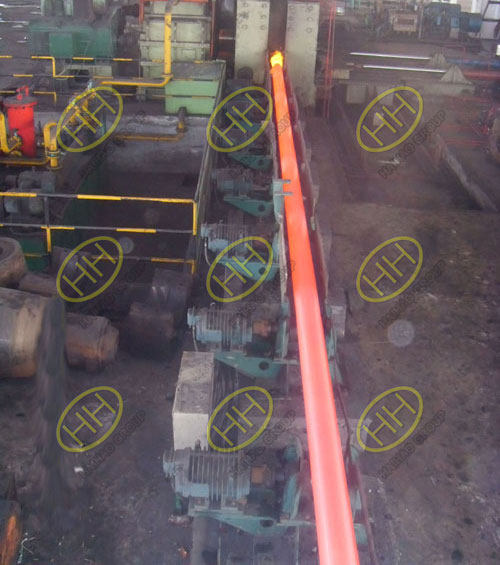Defects and preventive measures of forgings during heat treatment and quenching
Oxidation and decarburization
When steel is heated, there is a layer of brittle iron scale on the surface is called oxidation; decarburization refers to the phenomenon that the carbon content on the surface decreases. Oxidation and decarburization will reduce the hardness and fatigue strength of the surface of the forging, and also affect the size of the forging. In order to prevent oxidation and decarburization, it is usually heated in a salt bath furnace. When the requirements are higher, the surface of the forging can be coated with a protective agent or heated in a protective atmosphere and vacuum.
Overheating and overburning
The phenomenon that the austenite grains are significantly coarsened during the quenching and heating of the forging is called overheating. If the heating temperature is too high, the phenomenon of grain boundary oxidation and partial melting is called overburning. Overheating of forgings will not only reduce the mechanical properties of steel (especially toughness), but also easily cause quenching deformation and cracking. The overheated structure can be corrected by normalizing, and the overburned forging can only be scrapped. In order to prevent overheating and overburning of forgings, the heating temperature and holding time must be strictly controlled.
Deformation and cracking
When the forging is quenched and cooled, the stress caused by the temperature difference and the different structure transformation in different parts is called the quenching internal stress. When the quenching stress exceeds the yield strength of the steel, the forging will be deformed; when the quenching stress exceeds the tensile strength of the steel, the forging will crack and become a waste product. In order to prevent deformation and cracking of forgings, different quenching methods (such as graded quenching or austempering, etc.) and reasonable design measures (such as structural symmetry, uniform slope, avoiding sharp corners, etc.) can be used to minimize quenching stress. And after quenching, the tempering treatment is carried out in time.
Insufficient hardness
Insufficient hardness due to low heating temperature, insufficient holding time, insufficient cooling rate, or surface decarburization can be eliminated by re-quenching (but an annealing or normalizing treatment is required before quenching), and also Note the following two differences.
(1) The difference between the hardenability and the effective hardening depth of the actual forging. Forgings of the same kind of steel and different cross-sections are quenched under the same austenitizing conditions, and their hardenability is the same, but their effective hardening depth is different due to the shape, size and cooling medium of the forging. Hardenability is an inherent characteristic of steel itself. For a kind of steel, it is definite and can be used for comparison between different steel grades. In addition to the hardenability of steel, the effective hardening depth of the actual workpiece is also related to external factors such as the shape and size of the forging and the cooling medium used.
(2) The hardenability and hardenability of steel are two different concepts. Hardenability refers to the highest hardness that steel can reach after quenching, and it mainly depends on the carbon content of martensite. The hardenability of steel with good hardenability is not necessarily high. For example, the hardenability of low-carbon alloy steel is quite good, but its hardenability is not high; the hardenability of high-carbon steel is high, but its hardenability is poor.

